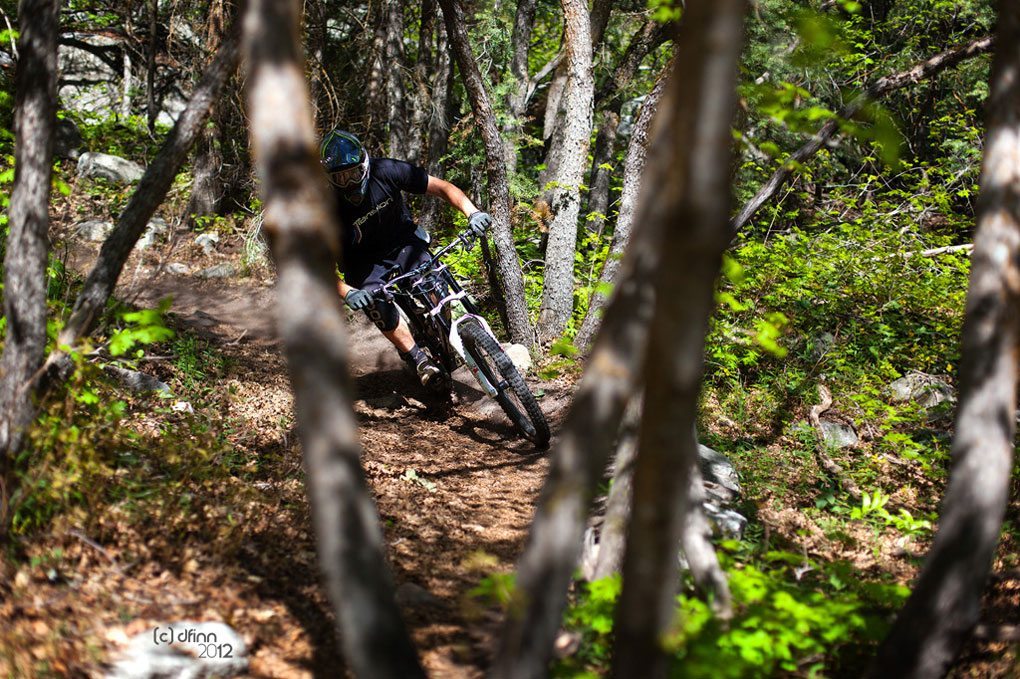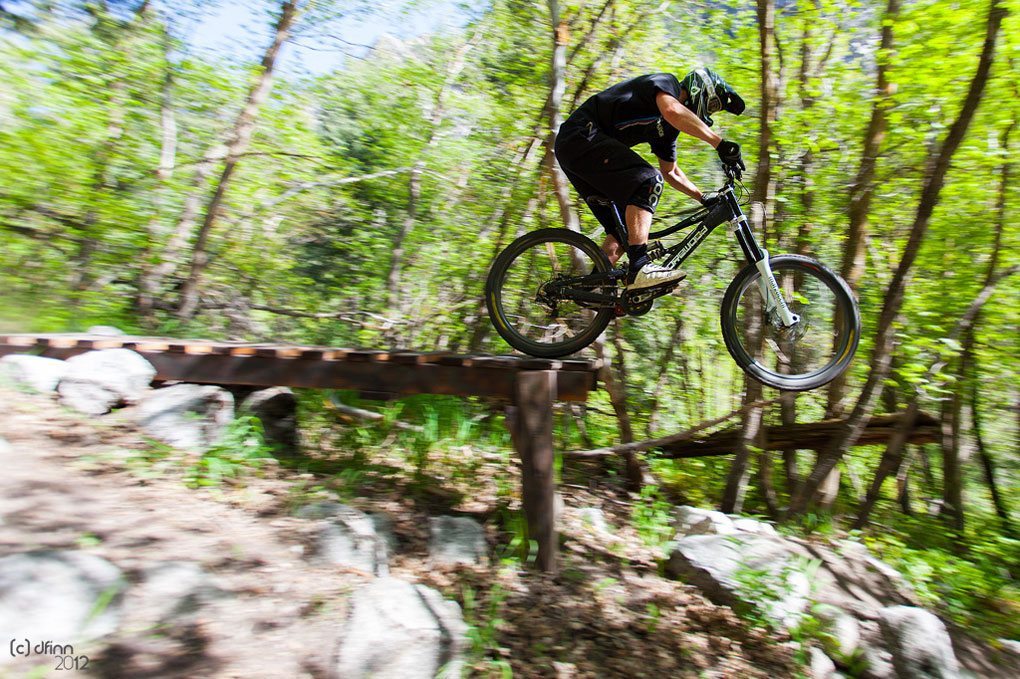I elected to “upgrade” to the 2012 version of the 888 EVO (dubbed V2) for two small reasons: first, the rebound circuit in the V2 fork has been updated, and the fork crown now takes 4-bolt IS stems, as opposed to the 2010/11 888, which required Marzocchi’s proprietary stem.
In practice, where the 888’s compression circuit is a hugely noticeable upgrade from the competition, I have not noticed any real difference in the rebound stroke compared to the older 888. That is not to say it’s bad; I have no issue here. I just don’t think it would make sense for someone to sell a fork at a loss to buy a new fork for this reason alone.

The addition of the 4-bolt IS stem compatible crown is nice, however, as it allows the rider to use a wide variety of stem configurations, brands, and styles, rather than limiting the user to pretty much only the Marzocchi 53mm stock stem with ~10-degree rise that is included with the 2010 and 2011 forks.
The 888 is offered in two trims. The RC3 EVO V2 Ti package features a titanium spring, titanium hardware, and a thin-walled nickel-plated stanchions. The standard RC3 EVO V2 package features a steel tuning spring, steel hardware, and a slightly thicker hard-anodized black stanchions. The Ti package saves about 270g overall in weight, but also costs about $600 more, at retail.
When replacing my fork, I determined that the weight savings was not worth the cost for me, though I am sure plenty of folks are happy to save that weight. The Ti spring saves about 125g, the thinner-walled stanchions save about 100g, and the Ti hardware saves about 50g.
I should also mention that the black hard-anodized stanchions do seem to be much more resistant to scratching than the nickel-coated stanchions, and do not give up any performance in the totally important “butteriness” scale.
I got the 2010 EVO Ti at the very beginning of 2011. I rode it literally all season, and put more than 100 hard days of downhilling on it. I did not replace the seals or oil in the fork at all during the season. It was ridden hard and put away wet. Compared to my previous Boxxer, which liked to be totally rebuilt every month (or after about 20 days of riding), or my old Fox 40 FIT, which preferred a full tear-down every 30-45 days of riding, the Marzocchi was flat out bulletproof.
Not that there was anything wrong with doing regular maintenance on high-performance tools, but, well, if I don’t need to, I can certainly find something better to spend a few hours on.
When I sold the 2010 fork to try the new 2012 version to see whether there was any difference, I went ahead and replaced the seals and oil just to be a nice guy, but it really wasn’t necessary. Very impressive.
The new 2010-and-onward generation 888 EVO forks are simply the most easily tunable, plushest, smoothest, most sensitive, most durable, best-riding and best-looking forks I have used.
If you’ve made it to the end of this review, I’m impressed. Good job. Now go sell your hunk of junk and buy one.


It appears that the rebound piston isn’t shimmed:
http://www.ridemonkey.com/forums/showthread.php?t=246399&p=3780984&viewfull=1#post3780984
He didn’t say they were.
Zoke forks have always been ported rebound dampers.
But as said in the review, the shimmed compression damper does seem pretty bad ass.
very nice of you to provide the shimstack configuration.
How difficult/secure/ghetto is the air-preload mod? I’ve heard it being done before, same with the 40’s. The main reason I want these with the Ti spring is to save weight, but should I struggle to find one with the medium spring, I’d be happy to run them with the RCV preload if there’s no detriment to performance or longevity.
I live in Whistler and my DH bike gets freaking ravaged by the park so I’m after longevity more so.
hey mitch,
i put over 200 days of rough riding (colorado front range) with no issues on the fork, other than breaking a spring, which was immediately handled and apparently an issue with 2010 forks only.
you run super low pressure (like 2 psi) so its not that big of a deal.
hope that helps.
I hope my question can get some responses. I’ve got a Marz 888 RC3 Evo V2 2012. When I took the fork off the bike, removing it from the crowns, the rebound/ compression leg sags lower by about 2 inches than the preload/spring leg. Do you think this might just be a lack of oil or air? Hope someone can answer. Thanks.